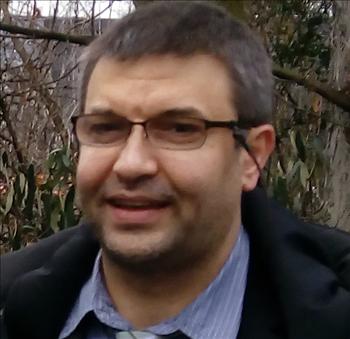
 Speaker "George Iordanescu" Details Back
Speaker "George Iordanescu" Details Back

-
Name
George Iordanescu
-
Company
Microsoft
-
Designation
Data Scientist
Topic
Using Transfer Learning as a powerful baseline for Deep Learning
Abstract
Neural Networks (NN) are a machine learning technique that has been used in academia and research for many decades. The main reason why they were not widely used in the industry until recently was that they were computationally intensive and extremely hard to train over many layers (deep networks). However, NNs have become very popular recently precisely because this big challenge has been solved by using predefined NN architectures that are easy to replicate, although they remain computationally intensive. One of the main focuses of such predefined multi layered (deep) NN architectures is image classification using convolutional NNs (CNN), a specific type of NN that uses shared NN layers weights to learn hierarchical shift invariant representations of images. This approach industrializes image preprocessing, by automating the images’ encoding into features (a.k.a. feature engineering) process, which traditionally required both computer science (image processing) knowledge and advanced subject matter expertise. Moreover, the main hurdle of training multi-layer CNNs can be addressed through “transfer learning”, a technique that uses CNNs pre-trained on generic image datasets as initial starting points for training domain specific classifiers. While the weights of the pre-trained CNNs can be further refined by continuing training on domain specific data, the most straightforward example of transfer learning is to “freeze” the network and use it to compute image features that are then fed into a regular machine learning algorithm to build a prediction model. This allows for virtually out-of-the-box building of powerful baseline deep learning models for virtually any domain, from medical images like computed tomography scans and X-ray images to industrial optical images or satellite imagery. This approach can be further generalized to non-image datasets like IoT time series, where CNN are usually less used presumably because of the perceived lack the 2D structure that can be extracted though convolutional layers. However, traditional deep-learning methods for time based recordings that use the time component directly through recurrent neural network (RNN) methods like long short-term memory (LSTM) algorithm, can in fact be directly compared against CNNs by emphasizing the multichannel 1D images properties of IoT data. A significant by-product of CNN based deep learning methods is that by using specific final trainable layers architectures like global average pooling (GAP) one can map the location of image areas that contribute to specific predictions. Individual prediction activation maps like Class Activation Mapping (CAM) images allow one to understand what the model learns and thus explain a prediction output. This information is extracted by the trained model from new images, which is extremely powerful considering that the class specific location information is also not provided at training stage. Besides model explainability, CAM images can be used for model improvement, through guided training by removing (or relabeling) in training data the areas that should not be the focus for prediction. Here we use GPU enabled Deep Learning Virtual Machines (DLVM) available on Microsoft Azure AI platform to show how data scientists can leverage open-source deep learning frameworks like Keras to build end to end intelligent signal classification solutions powered by deep learning models
Profile
George Iordanescu is a Data Scientist at Microsoft in the Algorithms and Data Science Group within the Artificial Intelligence and Research Division. George works on implementing machine learning solutions for industry problems like predictive maintenance and failure detection for IoT systems using deep learning, computer vision, and multivariate time series forecasting. He received his Ph.D. in EE from “Politehnica” University in Bucharest, Romania, before training as a post-doctoral visiting fellow in computer assisted detection at NIH (www.nih.gov). His research interests include semi-supervised learning and anomaly detection. Before joining Microsoft, he was a research scientist in academia and a consultant in healthcare and insurance industry.